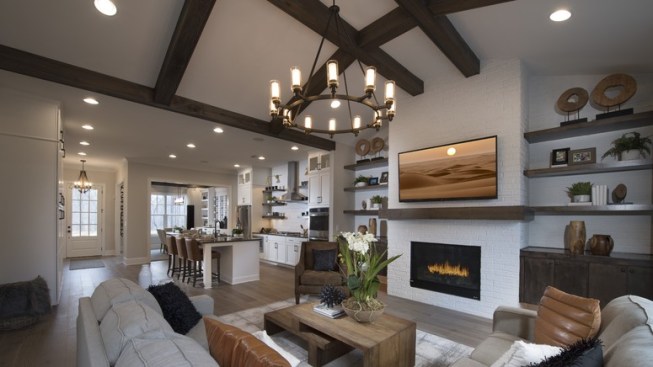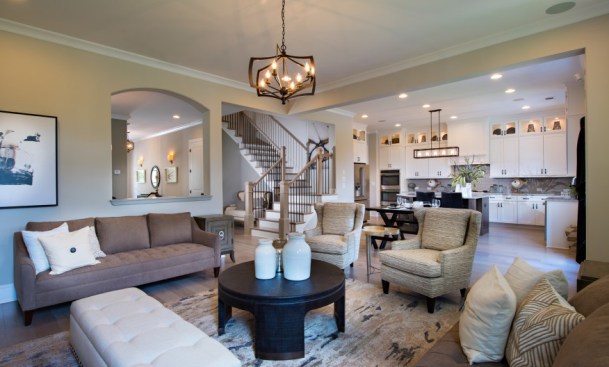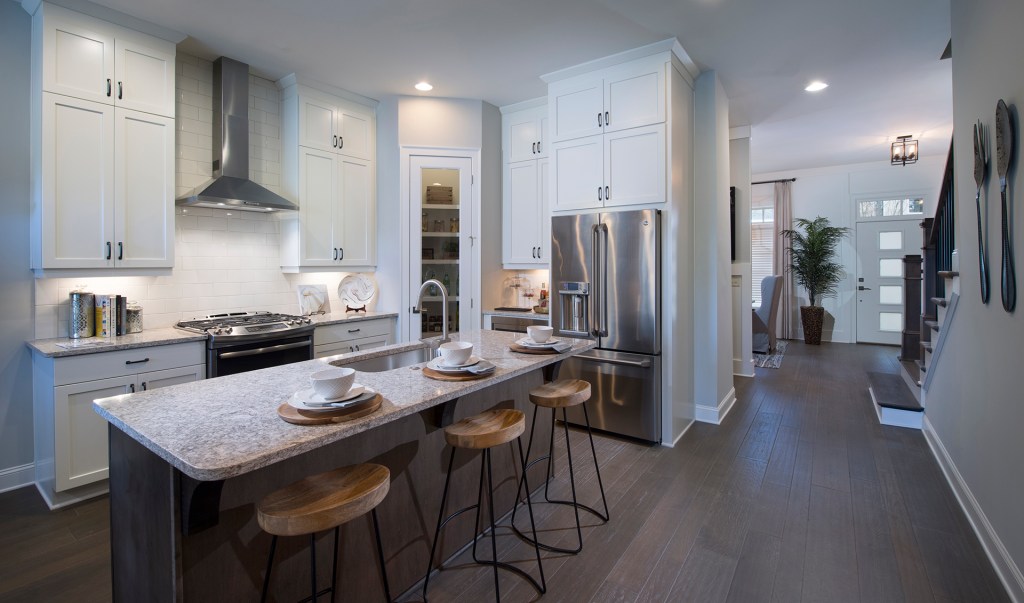In years past, The Providence Group had come to expect that its buyers would primarily be concerned with the visible components of the homes they were planning to buy. Many of the questions the Atlanta-based builder would receive from model home visitors would be about the exterior finishes, including cabinets, tiles, and hardwood floors.

Jeff Kingsfield, chief operating officer at The Providence Group.
However, over the course of this market cycle, the builder’s customers are asking more questions about the hidden components in the company’s homes, including HVAC systems and how much energy they use.
“Our consumers are smarter than they were, and they’re asking more questions about the products that are working inside their home than ever before,” says Jeff Kingsfield, chief operating officer at The Providence Group. “They’re really digging in and they want to know what’s behind the walls.”
To meet this new demand, Providence Group executives took notice of home building on the West Coast, where stricter codes have spurred an increase in energy-efficient and sustainable home construction. They especially looked to California builders, including The New Home Company, to decide which energy and environmental upgrades to explore.
“Trends like this tend to start out west and then go east… so we looked to see what are some of our competitors out west doing?” says Kingsfield. “We looked at some of their programs and compared them to what we’re doing and looked for where we could get the highest return on decisions that need to be made.”

The Providence Group
The Manning model at Traditions in Cumming, Georgia.
Inspired by what they learned, the Providence team decided to create a green building initiative of their own, designed to reduce the energy needs of its homes, limit the emission of VOCs from its components and finishes, and ensure a healthy living environment for residents. Last December, the firm unveiled its first E2 Crafted homes, made to meet or exceed energy-efficiency standards above and beyond local code. The homes are third-party inspected and certified and their green features come standard, not as an upgrade, Kingsfield says.
The builder is currently selling E2 Crafted homes in 15 new home communities north of Atlanta, which range in price from the low $300,000s to over $1 million. Five more communities are coming soon, including the Pratt Stacks townhome community, the first Providence Group project in the city of Atlanta.

The Providence Group
The Manning model at Traditions in Cumming, Georgia.
The E2 Crafted program includes LED lighting, electric hot water heaters, Energy Star-rated appliances, and water-efficient bath fixtures. All windows are fitted with low-E glass, and HVAC systems operate at a SEER of 14. The builder’s new approach to flooring pairs LP’s Top Notch subflooring system with low-VOC carpeting and CARB-compliant hardwoods. The builder also specs low-VOC paint, housewrap, and LP Tech Shield Roofs.
Each home is inspected by a third-party energy rater that conducts a series of tests including air balancing, duct blast testing, and a thorough examination of the building’s envelope. The builder has also started tracking the HERS rating of each of its homes, and providing those ratings to customers, much like an MPG rating for a new car. “One way buyers can separate us from [resale] homes is that we can provide you with an accurate HERS rating on your home,” says Kingsfield.
Providence also offers sustainable upgrades including tankless water heaters, spray foam insulation, and high-performance HVAC systems.
The company is betting that its new focus will appeal to its target buyers, made up of millennials and empty-nesters. Millennials, currently the largest home buying cohort according to Zillow, are highly environmentally conscious, and are more likely than other buyers to value homes that require less energy to operate and produce fewer pollutants than houses that are strictly code-compliant. Both millennials and empty nesters also value comfort, low operating costs, and low maintenance needs, research shows.
“We’re educating them a little bit about what options are there. If you’re going to live in this home for 20 or 30 years, what can you do to make it the most effective home that you can live in for energy-efficiency and air quality?” says Kingsfield. “Once they get the E2 program then that opens the conversation to say, “What else can I do? Is there anything else I can do to make my home better?”

The Matthews model at Bellmoore Park in Johns Creek, Georgia.
Since some of the new E2 Crafted program requirements go beyond state and local building codes, many of the new products it calls for were initially difficult for The Providence Group to acquire from its trading and distribution partners. Special orders for the products they didn’t already carry come at an additional charge – which is then added to the cost of the home.
The builder hopes that over time, its commitment to energy-efficient products and practices will compel its partners to make them standard, according to Kingsfield. This will not only eliminate the cost of special orders, but allows The Providence Group to access national rebate programs for energy-efficient materials, he says.
While The Providence Group considers itself ahead of the curve in its market, Kingsfield believes that competing builders are most likely noticing the same trends and moving in the same direction. “I think that the more we understand that buyer and what they want, the more that everybody’s going to start to say that it’s important to the buying demographic that’s out there, and that we need to meet that need and get ahead of it,” he says.



